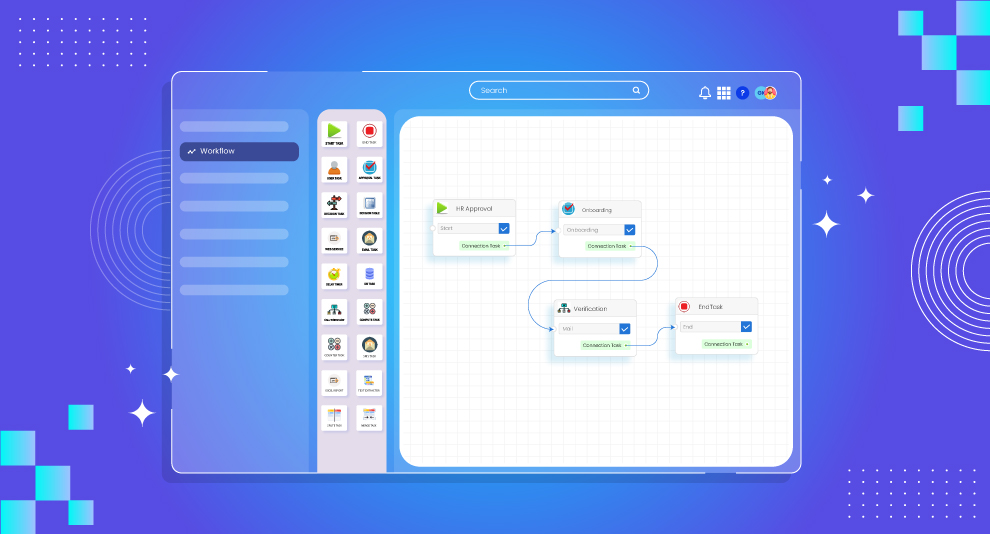Table of Contents
As the world becomes digitalized, the demand in the software industry is increasing rapidly. The traditional software development method requires more time and resources for the development. It becomes impossible to face this heavy demand.
Here comes the solution, low-code and no-code development platforms. With these low-code/no-code platforms, software development becomes easy, fast, and more efficient. The low-code/no-code platform like Yoroflow, offers numerous features that enhance the development platform’s efficiency and increase productivity.
This article elaborates on low-code platforms, no-code platforms, differences between low-code and no-code platforms, and their benefits.
What is a low-code platform?
Low-code platforms refer to developing software and tools with minimum coding skills. It is designed for software developers to make their work faster and more efficient. Employees with basic coding knowledge can work with this low-code platform and create their own software. Instead of writing codes for each module, software engineers can use low-code features like in-built modules, drag-and-drop options, and templates with slight modifications. Unlike the traditional model, this low-code platform does not require more coding, repeated testing, and much time for development.
What is a no-code platform?
No-code platform provides graphical interfaces for software development without the need of coding knowledge. Users can develop applications by just drag-and-drop options which are all pre-defined components. It has various features like graphical user interface, drag-and-drop option, pre-defined templates, workflows, and so on. This increases citizen developers to transform their innovative ideas into reality. This visual app builder platform increases the speed of the application development process and enhances its efficiency.
Low-code vs. no-code
- Low-code platforms are designed for software developers to enhance their speed and efficiency, whereas no-code platforms are designed for non-technical users without basic coding knowledge.
- Low-code app builders are suitable for large-scale companies with a lot of business logic and no-code app builders are more suitable for only small businesses with simple tasks.
- Considering the training process, low-code platforms require more training when compared to no-code platforms.
- Low-code platforms are faster than the traditional development method and no-code platforms are faster than low-code platforms.
- Low-code platforms allow users to extend their functionality, but no-code automation tools allow modifications only within the available templates.
- In scalability, low-code platforms are more scalable than the no-code platforms.
Advantages of low-code/no-code platforms
Even though there are several differences between the low-code and no-code platforms, both offer numerous benefits to enhance software development. Here are some advantages:
- Reduced cost: Since these development platforms do not need coding knowledge, any internal resources can handle software development. It reduces the need for recruiting highly skilled employees with coding experience. Also, these platforms do not need a long training process for the resources. This reduces the cost of the software development process.
- Fast development process: Low-code/no-code platforms provide various features like a graphical interface, drag-and-drop options, built-in templates, pre-defined components, analytics features, and reporting system. Users can develop software by using the graphical interface app builder. These features help the team to enhance the speed of the software development process.
- Easy to modify and update: Like traditional software development, these platforms do not require a lot of work for updating any changes in the requirements. It is easy to modify the structure without major coding. Thus, these platforms support changes in the requirements or future updates easily.
- Accessibility: Low-code/no-code application builders allow any resources to access these features for application or website development. Any non-techie can access all these features and create their applications using the graphical interface. Without major training, an HR manager can use this no-code application for procuring, onboarding, and all other HR processes.

- Flexibility: Low-code tools offer customizable features as per the requirements. Software developers can customize and extend the features like integration systems, workflows, creating new templates, and new interfaces. The workflow management software integrates various tools for creating workflows as per the organization’s requirements.

- Scalability: These low-code/no-code platforms can adopt changes in the team size or company size. As the organization grows, these platforms can adapt to the changes in size without any major changes in workflows or major coding requirements. This scalable feature enhances the efficiency and productivity of the organization.
Choose your low-code/no-code platform
As discussed earlier, there are several differences between low-code and no-code platforms. But both these platforms provide numerous benefits which help businesses to enhance their productivity. Using these platforms, organizations can develop software with internal resources itself, without hiring highly skilled employees.
Yoroflow, a low-code/no-code platform which provides numerous features like drag-and-drop options, various integrated tools, in-built templates, and customized dashboards. By leveraging all these features of Yoroflow, businesses can automate their workflow management and enhance their productivity efficiently.




